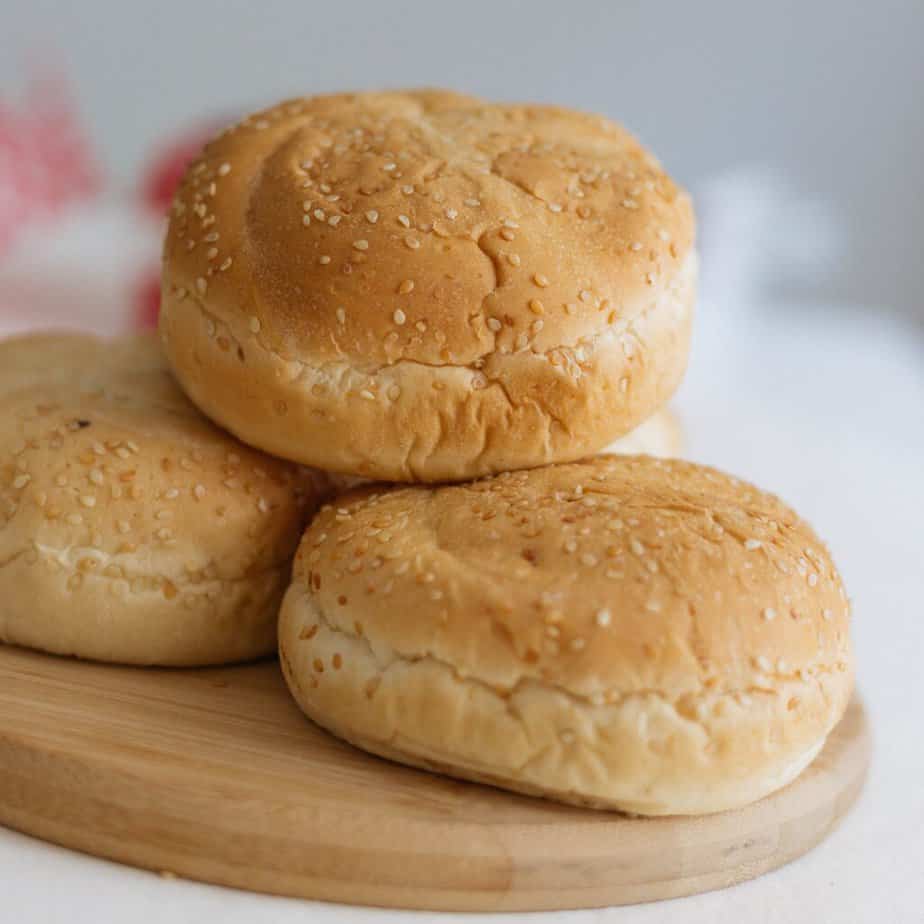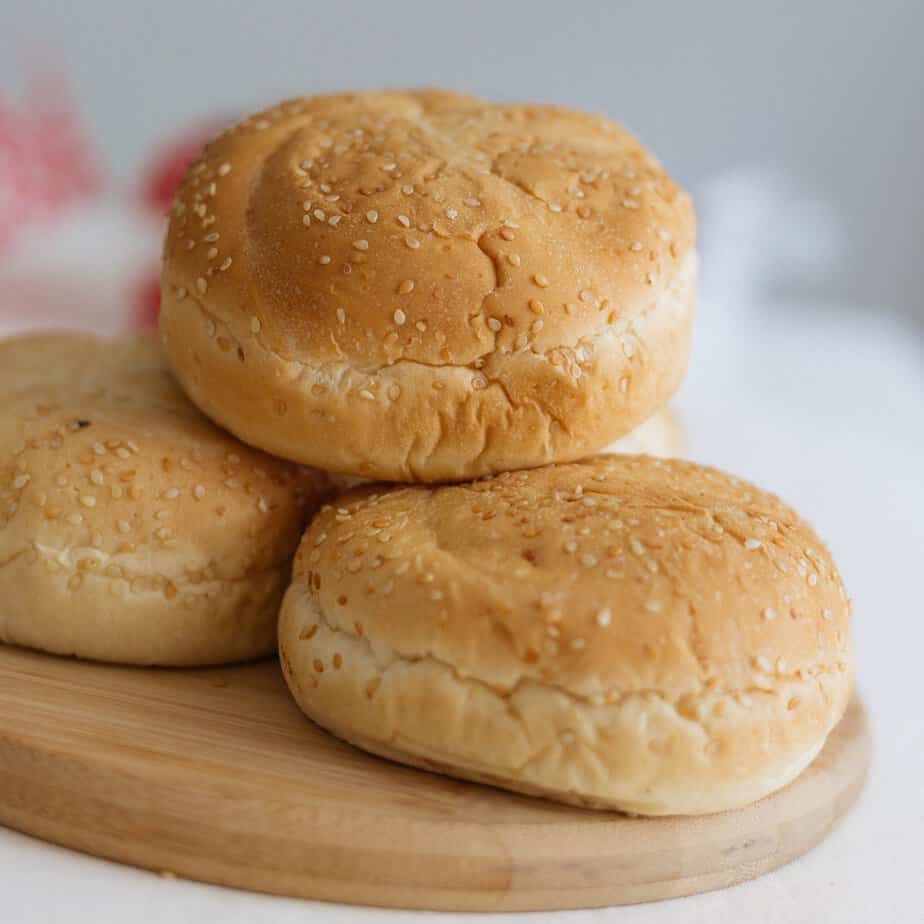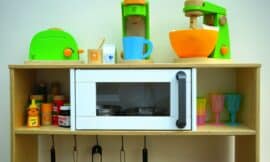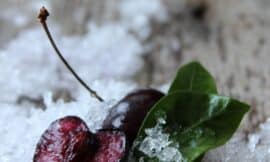How to Defrost Bread? It’s quite simple. The best way to defrost bread is to place the frozen bread simply on a small plate from the refrigerator and let it unfreeze for 15 to 20 minutes. Ever found yourself wondering about the best way to defrost bread quickly? We’ve put together a handy guide to answer that exact question.
Defrosting (or thawing) is the process of removal of frost and ice. People perform a defrosting procedure periodically on refrigerators and freezers to maintain their operating efficiency. Opening and closing the door over time allows new air to enter, causing water vapor from the air to condense on the cooling elements within the cabinet.

The best way to freeze bread is by placing the bread in a refrigerator. Freezing bread in refrigerator helps in preventing bread mold. This way of freezing bread helps to keep bread fresh.
This step-by-step guide will equip you with the knowledge on how to defrost bread. We’ll delve into the process of slow defrost and different ways on how to defrost bread. Choosing the right defrosting method is important.
Here is some great article on how to defrost bread.
Different methods on how to defrost bread:
Below are some of the different methods on how to defrost bread perfectly:
- Room Temperature Thaw (Slow & Even): Best for whole loaves, sourdough bread, frozen bread dough, white bread, dense bread crumbs. Unwrap, leave on counter for 3-4 hours, enjoy fluffy results. Room temperature check is very important for thawing bread. Defrosting at Room temperature is the slowest way to defrost bread.
- Fridge Overnight Chill (Safe & Steady): Ideal for sliced bread or time constraints. Wrap individually, store in fridge overnight, wake up to ready slices.
- Microwave Zest (Quick & Convenient): Individual bread slices only! Best for Italian bread, artisan bread, rye bread, brioche bread, ciabatta bread. Zap for 15-20 seconds, perfect for toast cravings.
- Oven Warm-Up (Warm & Toasty): Ideal for wheat bread. Preheat to 350°F, bake whole wheat bread loaves for 20-30 minutes, relish warm bread comfort. Oven is the quickest way to defrost bread.
- Toaster Twirl (Instant Crisp): Pop frozen slices straight in, watch them transform into golden toasty gems.
Here are some of the best ways to defrost frozen foods. This also has indepth information on how to defrost chicken and how to defrost vegetables quickly.
Step-by-Step Instructions on how to defrost bread:
Here are the Step-by-Step Instructions on how to defrost bread:
- Know Your Bread, Know Your Method: Remember, each bread has its own defrosting time. Dense loaves like sourdough revel in the gentle embrace of slow thawing, while airy baguettes might prefer a quick microwave tango.
- Experimentation: Don’t be afraid to mix and match defrosting methods! Perhaps a quick microwave zap followed by a room-temperature rest is your ideal combo for fluffy sandwich slices. Maybe experimenting with baking times in the oven is best.
- Safety First: Always remember the importance of safe food handling. Defrost only what you will use and never refreeze thawed bread. Keep your appliances such as bread pan, loaf pan, bread bowl, bread oven clean and follow recommended bread storage times.
Time taken for defrosting bread using different methods:
| Method | Description | Best for | Approximate Time. | Notes |
|---|---|---|---|---|
| Room Temperature | Leave unwrapped on the counter | Whole loaves, dense breads | 3-4 hours | Slowest method, preserves texture |
| Refrigerator | Wrap each slice in plastic and store overnight | Sliced bread, longer thawing time needed | 8-12 hours | Safe option, slightly firmer texture |
| Microwave | Microwave individual slices on high-temperature setting | Quick toast or sandwich use | 15-20 seconds per slice | Use defrost setting if available, risk of uneven heating |
| Oven | Preheat to 350°F and bake wrapped loaf | Whole loaves, dutch crunch bread, warm bread desired | 20-30 minutes | Quickest for whole loaves, may dry out slightly |
| Toaster | Pop frozen slices straight in | Individual slices, immediate use | Varies on toaster settings | Fastest method for toast, risk of burning |
Slow Thawing of Bread
Here are some of the ways for slow defrost or slow thawing:
Room Temperature: Allow 3-4 hours for a whole loaf to fully thaw, basking in the gentle caress of room temperature air.This method preserves the bread’s delicate crumb structure, ideal for bread texture. Pro tip: Wrap the loaf loosely in a clean kitchen towel to prevent drying, and unwrap it as it softens.
Refrigerator: Use the defrosting facility in the refrigerator to defrost bread. Tuck your loaf, wrapped snugly in plastic, onto a shelf for overnight thawing. This method is slower than room temperature, taking 8-12 hours, but it prevents spoilage concerns and maintains a slightly firmer texture, perfect for sturdy slices and toasted creations. Remember, remove the loaf from the fridge 30 minutes before toasting or eating for optimal texture.
How to Defrost Bread Quickly
When you defrost the bread, it becomes soggy. As temperatures rise, trapped moisture within the bread condenses on its surface, creating sogginess. Here’s how to counter this:
- Wrap Wisely: Ditch the plastic wrap! Opt for breathable materials like paper towels or clean dishcloths. These absorb excess moisture while allowing air circulation, preventing condensation from turning your bread into a soggy mess.
- Slice Strategically: Consider slicing your bread after thawing, not before. This minimizes the exposed surface area, reducing condensation and preserving the integrity of your slices.
- Post-Thawing Action: Immediately use defrosted bread or store it properly. Leaving it out uncovered invites staleness and moisture absorption. Wrap tightly in plastic wrap or store in a breadbox for later use.
By understanding condensation and employing these simple tactics, you’ll keep sogginess at bay.
Quickest way to defrost bread
The quickest way to defrost or thaw bread is by using a microwave. Here’s a simple step-by-step guide:
- Remove Packaging: Take the bread out of any plastic or paper packaging. This will help prevent the packaging from sticking to the bread during the thawing process.
- Wrap in a Damp Paper Towel: Dampen a paper towel and wrap it around the bread. The moisture helps to create steam, which speeds up the thawing process.
- Microwave in Short Bursts: Place the wrapped bread in the microwave. Use the defrost setting or set the microwave to a low power level. Microwave the bread in short 10-20 second bursts to prevent it from becoming too hot or starting to cook.
- Check and Separate Slices: After each burst, check the bread for thawing progress. If the slices are starting to separate, gently pull them apart to speed up the process.
- Continue Until Thawed: Repeat the short bursts in the microwave until the bread is thawed to your liking. Be cautious not to overheat the bread, as it may become too warm or even start to cook.
Keep in mind that using a microwave may result in slightly soggy or chewy bread, so it’s best to consume it shortly after thawing. If you have more time, you can also thaw bread at room temperature or in the refrigerator for a slower, but potentially better-quality thawing process.
But what if your defrosting journey leads to a slight past its-prime loaf? Here are a few options::
- Dice stale bread into cubes and toss them with olive oil, herbs, and spices. Bake until golden colour. You’ve got homemade croutons for soups, salads, or topping creamy pasta dishes.
- Stale bread is the perfect base for a comforting bread pudding. Soak it in a custard mixture infused with flavors like vanilla, cinnamon, or raisins, then bake until golden.
- Breathe new life into dry slices with a soak in an egg and milk mixture. Pan-fry them until golden brown, and drizzle with your favorite toppings–maple syrup, berries, whipped cream–for a breakfast (or any-time) treat that’s both nostalgic and delicious.
With a little creativity, you can make the loaf as fresh as possible.
Frequently Asked Questions on defrosting bread
This section serves as your FAQ, shedding light on common queries regarding defrosting the bread.
Can we defrost all bread types in the same way?
Not quite! Dense loaves like sourdough or pumpernickel benefit from slow thawing techniques like overnight in the fridge, while delicate baguettes might fare better with a quick microwave zap. Consider your bread’s crust thickness and overall density when choosing a method.
Can I defrost bread for specific uses, like sandwiches or toast?
Absolutely! If you envision a perfectly toasted masterpiece, consider giving frozen slices to the toaster. However, slow thawing ensures a softer crumb structure for easier spreading and stacking. Remember, room temperature allows bread to fully soften while the refrigerator keeps it slightly firmer, ideal for sturdy slices.
My defrosted bread is a little soggy. What went wrong?
Condensation occurs. To keep things dry, ditch plastic wrap in favor of breathable materials like paper towels or clean dishcloths. Slicing after thawing minimizes exposed surface area, and using defrosted bread promptly further prevents sogginess. Remember, proper storage in a breadbox is key.
My bread freezer burn! Is it still safe to eat?
Freezer burn, with its white patches and dry texture, might look unappetizing, but it’s safe to consume. Trim off the affected areas and enjoy the rest of your bread. To prevent future freezer burn, tightly wrap your loaves in plastic wrap or store them in freezer bags.
Here is an related article on frozen food guide and frozen food manufacturing process and and how to defrost fish.





